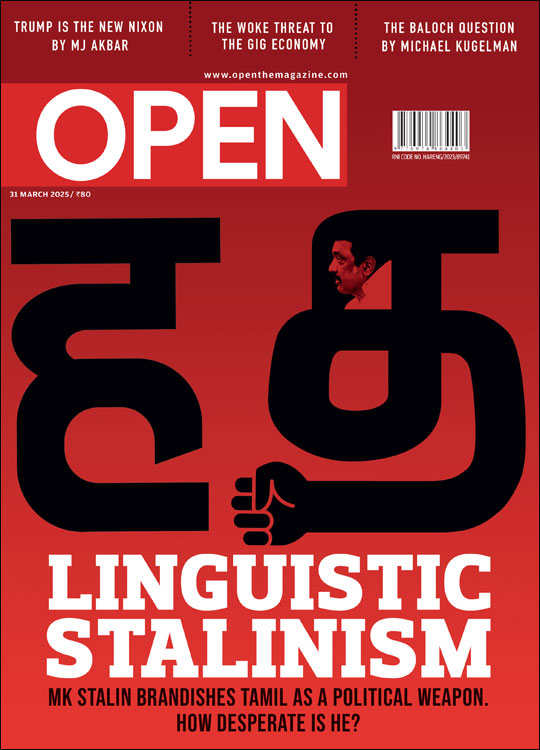Sixty Years of Baiju Bawra
How an unassuming film, with a small star cast and not-yet-famous music composer, became the mother of all musicals and a precursor to Imtiaz Ali’s Rockstar
 Shaikh Ayaz
Shaikh Ayaz
 Shaikh Ayaz
Shaikh Ayaz
 |
18 Apr, 2012
|
18 Apr, 2012
/wp-content/uploads/2015/11/baiju1.jpg)
How an unassuming film, with a small star cast and not-yet-famous music composer, became the mother of all musicals and a precursor to Imtiaz Ali’s Rockstar
There cannot be a film more Bollywoodish than Baiju Bawra, Vijay Bhatt’s 1952 classic, which, by a conservative estimate, was pooh-poohed as a pushover during the time of its making. Mehboob Khan’s Aan was the big one that year. Nobody on that set at Prakash Pictures, Andheri East, where much of Baiju Bawra was shot, felt that they were working on a film that would become a milestone.
Why would a modern audience be drawn towards this black-and-white, 165-minute-long film in patchy print, with a leading man few would remember—or care to remember—today? Simply because Baiju Bawra combines all the elements of a Hindi movie that exist in the cinema of today; because in it, you can discern the making of Bollywood’s music—past, present and future. It has a singing hero, a coy heroine, a comic sub-plot, a rivetting jugalbandi between Tansen and Baiju, and then, that tragic climax in which the lovers wash away down a river. But you must watch it, really, for it is vastly entertaining. Its influence, among other films, can be directly felt in Imtiaz Ali’s Rockstar, in which an artiste discovers that he has to struggle, suffer and undergo pain to create music.
Before Ranbir Kapoor became a symbol of the archetypical artiste slaving to his craft at Hazrat Nizamuddin Dargah, it was Bharat Bhushan who, as it happened, set the precedent 60 years ago. Just compare the transition points in both films; in Rockstar, Kapoor is constantly told that he must experience heartache and pain to make music, and later, during the film’s qawwali, Kun Fayakun, he looks up at the sky and suddenly, in that single fleeting moment, finds his voice.
The film can easily be divided into before-that-shot and after-that-shot. In one of the most critical moments of Baiju Bawra, the eponymous hero wanders in search of ‘dard bhara sangeet’. Exhausted, he introspects, “Where can I find great music? In the high mountains, flowing streams or parched deserts?” It strikes him, almost miraculously, that gyan (knowledge) can only be absorbed through a guru. It’s interesting that Baiju Bawra opens with a revenge plot, but the film’s real message is that an artiste must quash his ego if he is to achieve wisdom. A young Baiju witnesses his father’s death in a scuffle caused by Tansen’s guards, and he swears revenge—not only by defeating Tansen in a musical duel but also by ending it all with his enemy’s life. In the end, however, both Tansen and Baiju show great mercy towards each other; Tansen, when he forgives the young musician (“In this palace, blood can drip only through music, not the sword,” he tells his guards when they close in on a revengeful Baiju), and Baiju, when he pleads with Akbar to let Tansen live because if he is beheaded, music too will die with him. “Alampana, Tansen ko zindagi dekar sangeet ko maut se bacha leejiye (Emperor, you must save music from dying by keeping Tansen alive),” Baiju entreats Akbar after his hard-won duel.
Bharat Bhushan was earmarked for the role of Baiju because he had the face of a tragic musician, an image that refused to leave him all his life, driving him to reprise the same kind of role over and over again. He had freshly arrived from a short stint in Calcutta when he was offered the role of Baiju after a fairly satisfactory screen test. Meena Kumari, on the other hand, was a Vijay Bhatt discovery, having being launched by him in Leatherface in 1939 as a child artiste. It was Bhatt who gave Mahjabeen Bano the screen name Baby Meena. When she went for the screen test of Leatherface, she was instructed to emote. “This little girl wept and wept without any glycerine and everyone there was amazed. She was immediately approved,” recalls Pauravi Bhatt Pathak, the filmmaker’s granddaughter, who runs a website to keep alive the legacy of the Bhatts.
Since Bhatt was musically inclined and interested in literature, he had been thinking of making a film that could combine his two passions. He had read about Tansen, the great musician at Emperor Akbar’s court, but it was when he came across the legend of Baiju Bawra that he felt compelled to commission his own version. The doomed end to his film possibly came from the legend of Laila-Majnu. Dilip Kumar and Nargis were the first choice, but their date problems and monetary demands led Bhatt to settle for Bharat and Meena. Decades later, the great thespian would express regret for not taking up Baiju Bawra. “The idea was to get this film made within a limited budget. Both Bharat and Meena were new and they didn’t have any such problems,” says Pathak.
Similarly, music composer Naushad, who had earlier worked with Bhatt in Mala, Darshan and Station Master, and shared a comfortable working relationship with him, was summoned. According to Pathak’s website, ‘Bhatt was responsible for giving Naushad his first major break way back in 1940. At that time, lyricist DN Madhok, who had also written the story and dialogue for Mala, recommended a young struggling music director, who had only scored for the film Prem Nagar till then. The Bhatt brothers heard some of his tunes and signed him on a monthly salary of Rs 250.’
Naushad was pressed into service for Baiju Bawra primarily because of his grip on classical Hindustani music. He worked with Bhatt on the screenplay for nearly six months, signifying the kind of close involvement by which the film’s music was created. Naushad, Bhatt and his elder brother Shankar would meet every day for music sittings. “When Shankarbhai heard that the film will be full of classical music and ragas, he protested, ‘People will get a headache and they will run away.’ I was adamant. I wanted to change public taste. Why should people be fed what they like all the time? We presented them with music from our culture and it worked,” Naushad had said in an earlier interview.
The story behind the renowned jugalbandi between Tansen and Baiju towards the climax is preceded by arguably the most humbling anecdote in film music history. Ustad Amir Khan, a legendary figure at the time, was persuaded to lend his voice to Tansen. It was fitting that an artiste of his repute would be Tansen’s voice. Now, Naushad and Bhatt’s dilemma was that the great Tansen must lose to the young singer Baiju, but who could beat Ustad Amir Khan and how would they break this to the Ustad? They went to the Ustad and expressed their concern. The Ustad told them politely to get DV Paluskar, the only artiste he held in high esteem, to sing for Baiju. If he agrees, said the Ustad, he wouldn’t mind being defeated by him, thus solving their predicament and allowing some of the most exquisitely-rendered ragas one has ever heard in a Hindi film. The evocative bhajan Mann Tadpat, whose sheer power puts Baiju’s guru Swami Haridas back on his feet, is emblematic of this country’s secular fabric; it’s a hymn rooted in Hindu mythology but the creative trio were three young Muslims of the time—Naushad, Mohammed Rafi and lyricist Shakeel Badayuni.
Kavi Pradeep, who went on to pen the patriotic ditty Aye Mere Watan Ke Logon, was, at one point, in the running for the lyricist’s job. He was keen and went to meet Naushad. “But Naushad kept him waiting endlessly. Affronted, he left, swearing not to work with him,” reminisces actor BM Vyas, who played Meena Kumari’s father Mohan. Naushad didn’t have to look far for a replacement; Shakeel Badayuni, being his brother-in-law, was the natural contender. Baiju Bawra may have made overnight stars out of Bharat Bhushan and Meena Kumari, but it didn’t help anyone more than Naushad, whose soundtrack became the film’s foremost highlight. When Baiju Bawra opened at Regal Cinema, Delhi, on 5 October 1952, people were taken by its music. “The song Tu Ganga ki Mauj was a rage. We were in Delhi and everyone started congratulating me, and it was then that I realised that Baiju Bawra has been declared a hit,” recalls Vyas.
Tu Ganga ki Mauj was shot at a river in Panvel, near Mumbai, and in the absence of a choreographer, Bhatt shot the song instructing Bharat and Meena to do as they pleased. “My grandfather ran into Raj Kapoor at a function, who he told him, ‘I love the way you have picturised the Tu Ganga ki song. Ever since I have seen it, I have been thinking about it.” In turn, Bhatt, who doted on Raj Kapoor and admired his cinema, “cried like a baby” when the showman died. ‘What a great filmmaker, what a visionary, my grandfather was saying.’ Every scene of Baiju Bawra was sketched by art director and artist Kanu Desai. “Each drawing is a piece of art that you feel like framing,” says Pathak.
Since the shooting went on well, without any delay, the film was completed in a year’s time. Most of its unit members and technicians, including the editor, sound recordist and production manager, were from Bhatt’s extended family.
Vyas remembers how a bashful Meena Kumari used to get awkward performing a romantic scene in the presence of her father. “Her father was always hovering around her, and this poor girl couldn’t move without his permission. During romantic scenes, her father was marched out on some pretext or the other.” Bharat Bhushan was more of a recluse, but was the most courteous man on the sets. “If anybody approached him, he would go all out to help him,” says Vyas, who developed a close bond with Bhushan while working with him in other films like Samrat Chandragupt (1958). A man with a literary bend of mind, Bharat used to often talk about Premchand and other great writers with Vyas. “He would bring his books and read on the sets,” says Vyas. “One day, I went to his flat at Linking Road, Bandra, and was awestruck to find his room full of books. Meena, too, had a passion for reading, but would grumble about her father not giving her the space to read.” After Baiju Bawra’s success, Bhushan invested in a bungalow near Dilip Kumar’s Pali Hill home, but had to sell it to Jeetendra when he fell on hard times. Bhushan’s downfall is one of the most poignant stories of that era. “Once a superstar, he worked for Rs 500 a day towards the end of his career,” says Vyas, “From a plush bungalow in Bandra, he moved to Linking Road, then Vile Parle, Malad and finally to other rented properties.” Bhushan died in penury, leaving behind two daughters—one was handicapped, while the other sought work in television serials.
Once, Vyas recalls, while shooting in a village near Panvel, a huge unit was put up in huts. “Not hotels, because there were none,” grins Vyas. “One day, our cinematographer VN Reddy was complaining that, ‘The food is horrible, that there is no curd, salad and papad’. Vijay Bhatt heard him and said: ‘Take my car and go straight to Bombay. You will get curd, salad and papad and everything else you want’.” Bhatt was a no-nonsense man, says Vyas.
“He was also a nervous wreck,” reveals Pathak, “Every time a film was about to be released, he would run away to a hill station.” In his absence, his brother Shankar managed the show, despatching telegrams to him to apprise him of his film’s box office status. “Shankarbhai would urge him to return, ‘Come back, the picture has become a huge hit.’”
Originally from Saurashtra, Gujarat, the Bhatt brothers had a fascination for theatre and cinema. They used to sell china grass halwa (a sweetmeat) and use the profits to buy cinema tickets. Writing on her website of their rise within the ranks of the film industry, Pathak notes, ‘It was Ardeshir Irani of Alam Ara who showed them the way. At that time, he was the managing director of Royal Studios. He glanced through the stories they had written, selected one of them and asked the brothers to meet the proprietor of the studio, Seth Aboo Hussein. ‘Show him the story and then come back to me. If it is all right for him, it is all right for me,’ they were told. The story was approved and Ardeshir Irani took it upon himself to teach Vijay Bhatt how to write a screenplay. Every evening after the day’s work and dinner, the Bhatt brothers would make their way to Majestic Cinema, built by Ardeshir Irani in 1918 in partnership with the exhibitor, Abdulaly Yusoofaly.’ With Irani’s help, Vijay Bhatt scripted his first screenplay, Vidhi Ka Vidhan, which was directed by KP Bhave.
Inspired by the scale of Cecil B DeMille’s Cleopatra, Samson and Delilah and The Ten Commandments, Bhatt wanted Baiju Bawra to have stunning visuals. The river scenes were a homage to DeMille. “He loved the way DeMille used special effects. He always spoke of the ‘parting of the Red Sea’ scene from The Ten Commandments. ‘This is how we must do it,’ he used to tell his technicians,” says Pathak. On a US tour in 1947, Bhatt met DeMille and sought his autograph. The filmmaker signed with a personalised message: ‘Greetings from one director who is still trying to make good pictures, to another director, who will make great ones long after I am gone.’ Later, Bhatt travelled to the Soviet Union with Baiju Bawra in 1954 as a member of the first Indian film delegation.
Vyas proposes that the film’s prints be restored, and if possible, coloured. “Baiju Bawra is old, but at once, new. It must be introduced to young audiences, and this should be done with fanfare like they did for Mughal-E-Azam,” says Vyas.
Bhatt’s youngest brother, Harsukh Bhatt, who was fan assistant on the film, feels the classic shouldn’t be tampered with. “Nor should it be remade,” he says emphatically, as he fetches his only DVD of Baiju Bawra and possibly the last surviving memory of his time spent in cinema. The octogenarian lives by himself in a quiet colony in the Mumbai suburb of Chembur, and watches Baiju Bawra once every day. His daughter drops in every evening. Over the years, he has lost his memory and has forgotten much of what transpired during the shooting. He would be pleased, though, if the film were made available to a wider audience. “Just re-release it, if that’s what it takes.”

/wp-content/uploads/2025/03/Cover-Tamil.jpg)











More Columns
“Majority of Jews in US universities oppose what Israel is doing to Palestinians” Ullekh NP
Flights of Fancy Shail Desai
Win ICC Titles And Take Cash Bonus, Says The BCCI Short Post